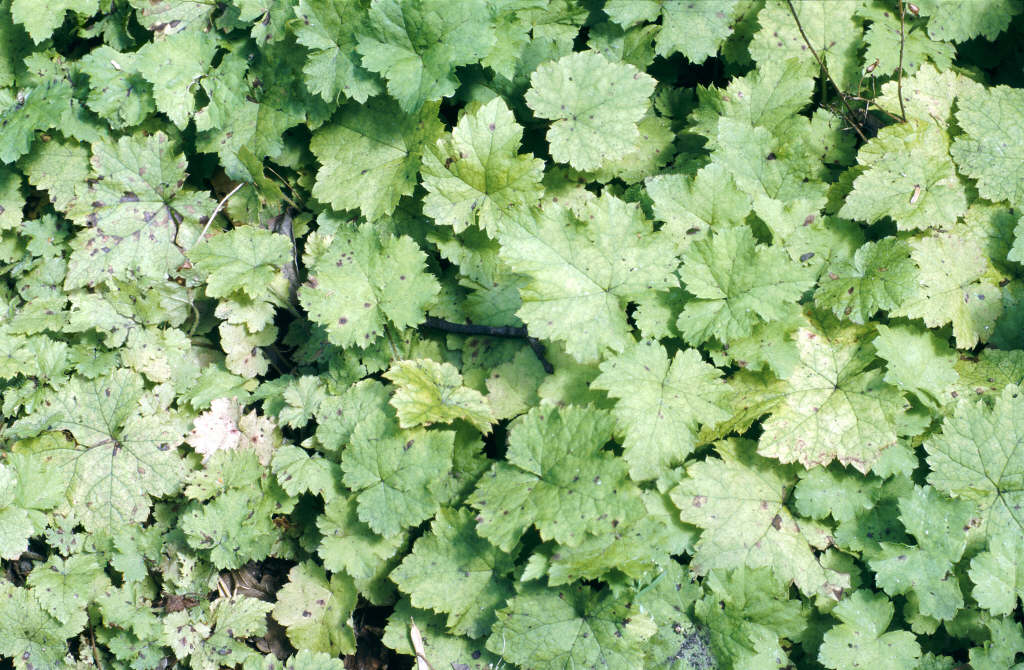Tiarella cordifolia
foam flower
A stoloniferous herbaceous perennial to 30cm in height, with 3 to 5-lobed, broadly ovate leaves becoming bronze-tinged in autumn, and erect stems bearing open racemes of small, creamy-white flowers
Size
Ultimate height
0.1–0.5 metresTime to ultimate height
2–5 yearsUltimate spread
0.1–0.5 metresGrowing conditions
Moisture
Moist but well–drained, Poorly–drainedpH
Acid, Alkaline, NeutralColour & scent
| Stem | Flower | Foliage | Fruit | |
| Spring | Green | |||
|---|---|---|---|---|
| Summer | Cream | Green | ||
| Autumn | Bronze Green | |||
| Winter |
Position
- Full shade
- Partial shade
Aspect
North–facing or West–facing or East–facing
Exposure
Sheltered Hardiness
H5Botanical details
- Family
- Saxifragaceae
- Native to GB / Ireland
- No
- Foliage
- Deciduous
- Habit
- Clump forming
- Genus
Tiarella are rhizomatous herbaceous perennials forming a clump of rounded, more or less palmately lobed leaves, with very small, star-shaped flowers in terminal panicles or racemes on erect stems
- Name status
Correct
- Plant range
- Eastern N America
How to grow
Cultivation
Ideally grow in cool, moist, humus-rich soil in partial or full shade but can tolerate a wide range of soils and can spread freely. Protect from excessive winter wet
Propagation
Propagate by seed in pots in a cold frame as soon as seed is ripe or in spring. Propagate by division in spring
Suggested planting locations and garden types
- Cottage and informal garden
- Flower borders and beds
- Ground cover
- Underplanting of roses and shrubs
Pruning
Remove spent flowers and leaves as required
Pests
Generally pest-free
Diseases
Generally disease-free
Get involved
The Royal Horticultural Society is the UK’s leading gardening charity. We aim to enrich everyone’s life through plants, and make the UK a greener and more beautiful place.
